|
[1]
|
E. J. Richey, C. D. Harrell, Brucella abortus disease (brucellosis) in beef cattle, 1997.
|
|
[2]
|
M. T. Li, G. Q. Sun, J. Zhang, Z. Jin, X. D. Sun, Y. M. Wang, et al., Transmission dynamics and control for a brucellosis model in Hinggan League of Inner Mongolia, China, Math. Biosci. Eng., 11 (2014), 1115–1137. https://doi.org/10.3934/mbe.2014.11.1115 doi: 10.3934/mbe.2014.11.1115

|
|
[3]
|
M. N. Seleem, S. M. Boyle, N. Sriranganathan, Brucellosis: A re-emerging zoonosis, Vet. Microbiol., 140 (2009), 392–398. https://doi.org/10.1016/j.vetmic.2009.06.021 doi: 10.1016/j.vetmic.2009.06.021

|
|
[4]
|
G. Q. Sun, M. T. Li, J. Zhang, W. Zhang, Z. Jin, Transmission dynamics of brucellosis: Mathematical modelling and applications in China, Comput. Struct. Biotechnol. J., 18 (2020), 3843–3860. https://doi.org/10.1016/j.csbj.2020.11.014 doi: 10.1016/j.csbj.2020.11.014

|
|
[5]
|
Y. Lin, M. H. Xu, X. Y. Zhang, T. Zhang, An exploratory study of factors associated with human brucellosis in mainland China based on time-series-cross-section data from 2005 to 2016, PLoS ONE, 14 (2019), e0208292. https://doi.org/10.1371/journal.pone.0208292 doi: 10.1371/journal.pone.0208292

|
|
[6]
|
S. J. Lai, H. Zhou, W. Y. Xiong, M. Gilbert, Z. J. Huang, J. X. Yu, et al., Changing epidemiology of human brucellosis, China, 1955–2014, Emerg. Infect. Dis., 23 (2017), 184. https://doi.org/10.3201/eid2302.151710 doi: 10.3201/eid2302.151710

|
|
[7]
|
H. Jiang, M. G. Fan, J. D. Chen, J. C. Mi, B. Y. Cui, MLVA genotyping of Chinese human Brucella melitensisbiovar 1, 2 and 3 isolates, Bmc. Microbiol., 11 (2011), 256–256. https://doi.org/10.1186/1471-2180-11-256 doi: 10.1186/1471-2180-11-256

|
|
[8]
|
X. Ma, X. F. Luo, L. Li, Y. Li, G. Q. Sun, The influence of mask use on the spread of COVID-19 during pandemic in New York City, Results Phys., 34 (2022), 105–224. https://doi.org/10.1016/j.rinp.2022.105224 doi: 10.1016/j.rinp.2022.105224

|
|
[9]
|
K. K. J. Asamoah, O. Eric, A. Abidemi, S. E. Moore, G. Q. Sun, Z. Jin, et al., Optimal control and comprehensive cost-effectiveness analysis for COVID-19, Results Phys., 33 (2022), 105–117. https://doi.org/10.1016/j.rinp.2022.105177 doi: 10.1016/j.rinp.2022.105177

|
|
[10]
|
Q. Hou, X. D. Sun, Modeling sheep brucellosis transmission with a multi-stage model in Changling County of Jilin Province, China, J. Appl. Math. Comput., 51 (2016), 227–244. https://doi.org/10.1007/s12190-015-0901-y doi: 10.1007/s12190-015-0901-y

|
|
[11]
|
Q. L. Chen, S. J. Lai, W. W. Yin, H. Zhou, Y. Li, D. Mu, et al., Epidemic characteristics, high-risk townships and space-time clusters of human brucellosis in Shanxi Province of China, 2005–2014, BMC Infect. Dis., 16 (2016), 1–10. https://doi.org/10.1186/s12879-016-2086-x doi: 10.1186/s12879-016-2086-x

|
|
[12]
|
J. Zhang, S. G. Ruan, G. Q. Sun, X. D. Sun, Z. Jin, Analysis of a multi-patch dynamical model about cattle brucellosis, J. Shanghai Norm. Univ.: Nat. Sci. Math., 43 (2014), 15.
|
|
[13]
|
P. Dreessche, J. Watmough, Reproduction numbers and sub-threshold endemic equilibria for compartmental models of disease transmission, Math. Biosci., 180 (2002), 29–48. https://doi.org/10.1016/S0025-5564(02)00108-6 doi: 10.1016/S0025-5564(02)00108-6

|
|
[14]
|
H. Smith, Monotone Dynamical Systems: An Introduction to the Theory of Competitive and Cooperative Systems, Ams Ebooks Program, 1995. http://dx.doi.org/10.1090/surv/041
|
|
[15]
|
M. Y. Li, An Introduction to Mathematical Modeling of Infectious Diseases, Cham, Switzerland, 2018. https://doi.org/10.1007/978-3-319-72122-4
|
|
[16]
|
R. A. Horn, C. R. Johnson, Topics in Matrix Analysis, Cambridge University Press, 1985. https://doi.org/10.1017/CBO9780511810817
|
|
[17]
|
D. Gao, S. Ruan, A multipatch malaria model with logistic growth populations, SIAM J. Appl. Math., 72 (2012), 819–841. https://doi.org/10.1137/110850761 doi: 10.1137/110850761

|
|
[18]
|
J. K. Hale, O. Lopes, Fixed point theorems and dissipative processes, J. Differ. Equations, 12 (1973), 391–402. https://doi.org/10.1016/0022-0396(73)90025-9 doi: 10.1016/0022-0396(73)90025-9

|
|
[19]
|
H. K. Khalil, Y. S. Zhu, H. Dong, Z. Z. Li, Nonlinear Systems, 3nd edition, Publishing House of Electronics Industry, Bei Jing, 2005.
|
|
[20]
|
Thieme, R. Horst, Persistence under relaxed point-dissipativity (with application to an endemic model), Siam J. Math. Anal., 24 (2006), 407–435. https://doi.org/10.1137/0524026 doi: 10.1137/0524026

|
|
[21]
|
X. Q. Zhao, Uniform persistence and periodic coexistence states in infinite-dimensional periodic semiflows with applications, Can. Appl. Math. Q., 3 (1995), 473–495.
|
|
[22]
|
X. Zhao, Z. Jing, Global asymptotic behavior in some cooperative systems of functional differential equations, Can. Appl. Math. Q., 4 (1996), 421–444.
|
|
[23]
|
X. Q. Zhao, Dynamical Systems in Population Biology, Springer, New York, 2003. https://doi.org/10.1007/978-3-319-56433-3
|
|
[24]
|
Q. Hou, X. D. Sun, J. Zhang, Y. J. Liu, Z. Jin, Modeling the transmission dynamics of sheep brucellosis in Inner Mongolia Autonomous Region, China, Math. Biosci., 242 (2013), 51–58. https://doi.org/10.1016/j.mbs.2012.11.012 doi: 10.1016/j.mbs.2012.11.012

|
|
[25]
|
H. Jiang, D. O'Callaghan, J. B. Ding, Brucellosis in China: History, progress and challenge, Infect. Dis. Poverty, 9 (2020). https://doi.org/10.1186/s40249-020-00673-8 doi: 10.1186/s40249-020-00673-8

|











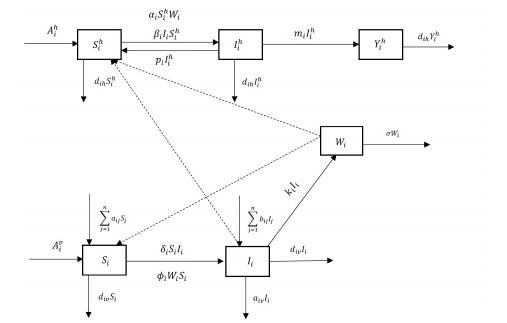
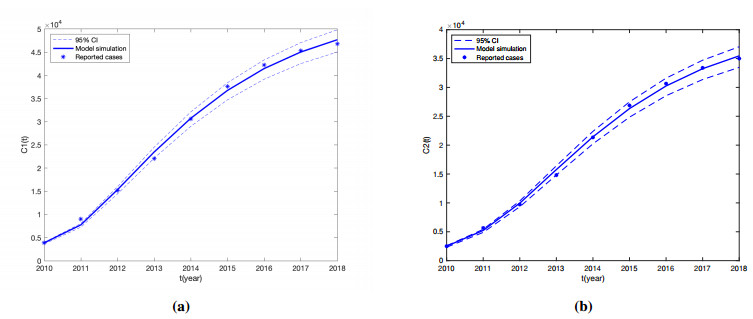
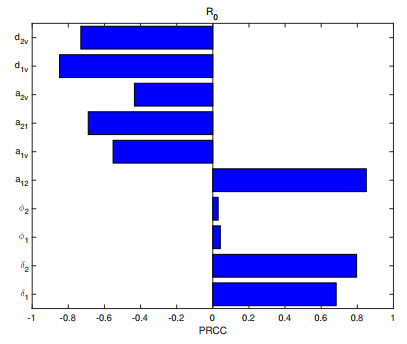
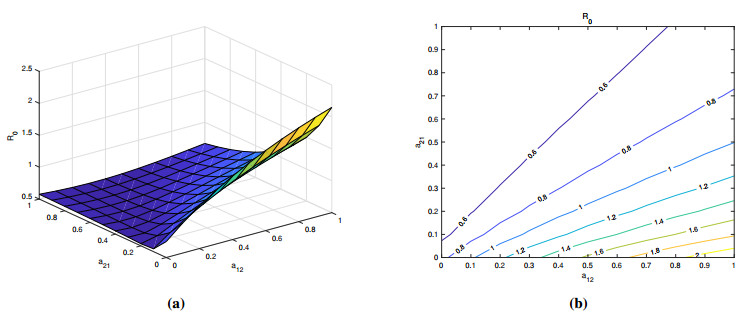
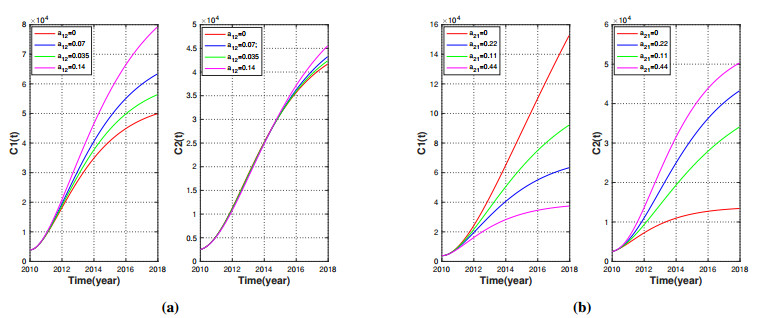
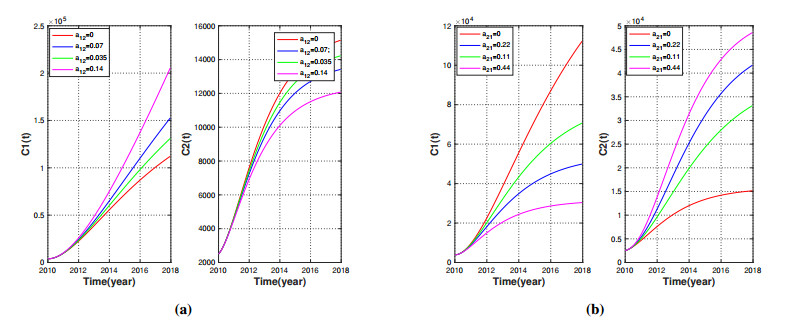
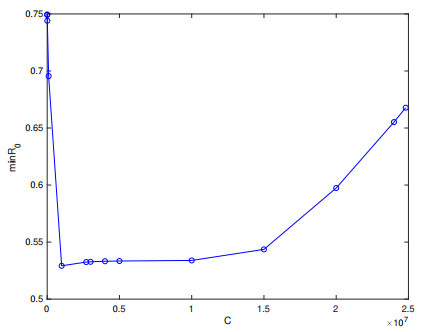
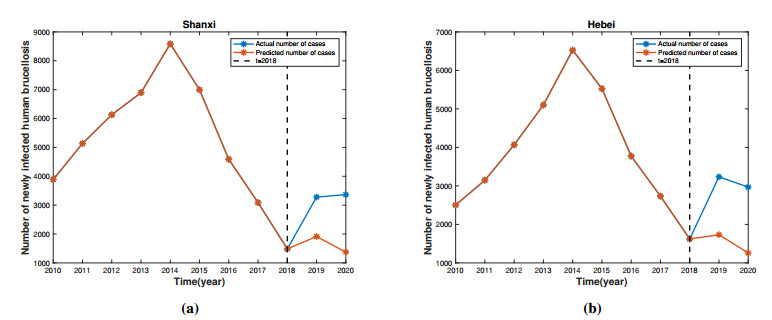


 DownLoad:
DownLoad: